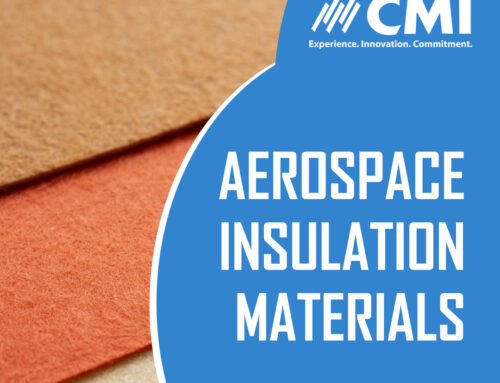Nanotechnology has revolutionized various industries, including insulation materials. Over the years, there have been significant advancements in nanotechnology-based insulation materials, leading to improved thermal efficiency, durability, and sustainability. This article explores the latest advancements in nanotechnology-based insulation materials, their types, applications, advantages, challenges, and future prospects.
Insulation is vital in maintaining comfortable indoor environments and reducing energy consumption. Traditional insulation materials have their limitations in terms of efficiency and sustainability. However, with the advent of nanotechnology, new possibilities have emerged in developing highly efficient insulation materials.
Understanding Nanotechnology-based Insulation Materials
Nanotechnology involves manipulating materials at the nanoscale, which is the scale of atoms and molecules. Nanotechnology-based insulation materials utilize the unique properties exhibited by materials at this scale to enhance insulation performance. These materials often have high porosity, low thermal conductivity, and excellent mechanical strength.
Types of Nanotechnology-based Insulation Materials
1. Aerogel Insulation
Aerogel is a lightweight, nanoporous material with an interconnected network of solid particles and air. It is one of the most effective insulators known to date. Aerogel insulation offers exceptional thermal insulation properties, providing superior heat resistance while being lightweight and environmentally friendly.
2. Nanocellulose Insulation
Nanocellulose is derived from plant-based cellulose and has exceptional thermal insulation properties due to its high aspect ratio and low thermal conductivity. It can be incorporated into various forms, such as films, foams, and coatings, making it suitable for different applications.
3. Graphene Insulation
Graphene, a single layer of carbon atoms arranged in a hexagonal lattice, exhibits remarkable thermal and electrical conductivity properties. By incorporating graphene into insulation materials, researchers have significantly improved thermal insulation performance, making it a promising option for future applications.
4. Nanowood Insulation
Nanowood is a novel nanotechnology-based insulation material derived from wood. Through a process that involves removing lignin and hemicellulose, the resulting material exhibits superior thermal insulation properties, exceptional strength, and good fire resistance. Nanowood insulation shows great promise for various applications, including building and construction.

Applications of Nanotechnology-based Insulation Materials
1. Building and Construction
Nanotechnology-based insulation materials find extensive applications in the building and construction industry. They contribute to energy efficiency by reducing heat transfer through walls, roofs, and floors. These materials can enhance the thermal performance of buildings, resulting in reduced energy consumption and lower carbon footprints.
2. Electronics and Energy Storage
The miniaturization of electronic devices and the growing demand for energy storage systems require efficient thermal management. Nanotechnology-based insulation materials enable better thermal regulation in electronic devices and batteries, improving performance, increasing lifespan, and enhancing safety.
3. Automotive Industry
The automotive industry increasingly adopts nanotechnology-based insulation materials for thermal and acoustic management. These materials can help reduce heat transfer from engines, exhaust systems, and other vehicle components, improving fuel efficiency, reducing noise, and enhancing passenger comfort.
Advantages of Nanotechnology-based Insulation Materials
Nanotechnology-based insulation materials offer several advantages over traditional insulation materials. These include:
- Enhanced thermal performance: Nanoscale materials exhibit low thermal conductivity, improving insulation performance and energy efficiency.
- Lightweight: Many nanotechnology-based insulation materials are lightweight, making them easier to handle and install.
- Space-saving: Their superior thermal efficiency allows for thinner insulation layers, providing more space for other applications.
- Sustainability: Some nanotechnology-based insulation materials are derived from renewable sources and are biodegradable, contributing to sustainability efforts.
Challenges and Future Prospects
While nanotechnology-based insulation materials have shown great potential, there are still challenges to overcome. These include scalability, cost-effectiveness, and long-term durability. Researchers and industry professionals continue to work towards addressing these challenges and further improving the performance and commercial viability of these materials.
Looking ahead, the future prospects of nanotechnology-based insulation materials are promising. Ongoing research aims to develop novel materials with higher thermal performance, improved manufacturing processes, and wider applications. With further advancements, nanotechnology-based insulation materials have the potential to revolutionize various industries and contribute to a sustainable future.
Conclusion
The field of nanotechnology-based insulation materials has witnessed significant advancements in recent years. Aerogel insulation, nanocellulose insulation, graphene insulation, and nanowood insulation are just a few examples of innovative materials developed through nanotechnology. These materials offer enhanced thermal performance, lightweight properties, and sustainability benefits. They find applications in building and construction, electronics and energy storage, and the automotive industry, among others. While challenges exist, ongoing research and development promise an exciting future for nanotechnology-based insulation materials.
FAQs
Q1: Are nanotechnology-based insulation materials safe to use? A1: Yes, nanotechnology-based insulation materials are generally safe to use. However, it is important to follow proper handling and installation guidelines provided by manufacturers.
Q2: Can nanotechnology-based insulation materials reduce energy consumption? A2: Yes, these materials have high thermal efficiency, which helps reduce heat transfer and lowers energy consumption in various applications.
Q3: Are nanotechnology-based insulation materials expensive? A3: The cost of nanotechnology-based insulation materials varies depending on the specific material and application. However, with advancements and increased production, prices are expected to become more competitive.
Q4: Do nanotechnology-based insulation materials have any environmental benefits? A4: Many nanotechnology-based insulation materials are derived from sustainable and renewable sources, contributing to environmental sustainability.
Q5: How can nanotechnology-based insulation materials improve the efficiency of electronic devices? A5: These materials can enhance thermal management in electronic devices, preventing overheating and improving overall performance and lifespan.






